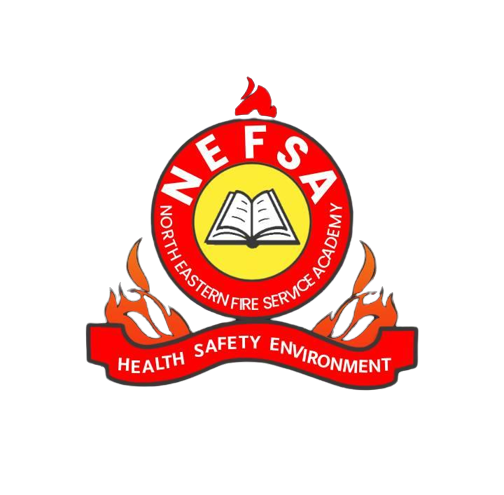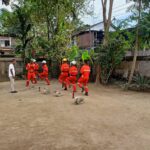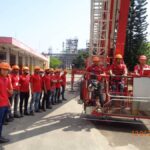In an era of denser cities, complex industrial sites, and evolving hazards, emergency response demands more than courage — it needs up-to-date skills, realistic practice, and an understanding of modern systems. NEFSA advanced fire training modules address this by blending practical live-fire exercises, incident management instruction, and simulation-based learning to create responders who act quickly and safely when it matters most.
Why modern emergency response needs advanced training?
Several converging trends make sophisticated training essential: increased high-rise and mixed-use construction, more complicated electrical and process hazards, and higher expectations under national safety codes. Regulatory frameworks such as the National Building Code stress fire prevention, detection and trained personnel meaning organizations must invest in accredited training to meet both legal and operational requirements.
What “advanced” means at NEFSA: core module breakdown?
NEFSA’s curriculum (public course descriptions and academy overviews) typically combines classroom theory with progressive practical modules. Key elements include:
-
Foundations & fire science: combustion theory, fire behavior, and building fire dynamics essential for tactical decision-making.
-
Live-fire practicals: controlled burns, hose handling, search and rescue drills, and breathing apparatus training to build muscle memory under stress.
-
Emergency medical & casualty care: basic life support and casualty management during rescues so responders stabilize victims before handover.
-
Incident command & multi-agency coordination: ICS-style command, communication protocols, and joint drills with police/EMS for complex incidents.
-
HazMat and specialized response: hazardous materials identification, control, and decontamination procedures aligned with NFPA competency standards.
Together, these modules produce firefighters and safety officers who can both operate tools and lead coordinated responses.
Simulation, VR and safe repetition training technologies that accelerate learning
NEFSA and leading academies increasingly pair live practice with simulation tools – from tabletop command exercises to immersive VR systems used worldwide. Research and industry deployments (including FLAIM-style systems and government trials) show that VR lets trainees rehearse rare but dangerous scenarios (high-rise rescues, hazmat leaks, confined space operations) with no live-fire risk — improving decision speed, situational awareness, and psychological preparedness. Simulation also enables measurable assessment and repeatable scenario design for continuous improvement.
Alignment with standards and credentials
High-quality training matters not just for performance, but for compliance. NEFSA’s certificate programs align with nationally recognized standards that employers and municipal authorities accept — making graduates eligible for operational roles and enabling organizations to meet statutory safety obligations under the National Building Code and related state rules. This regulatory alignment increases employability and institutional trust.
Real-world impact – faster, safer, measurable outcomes
When responders practice realistic scenarios regularly, response times and outcomes improve. Case reports from training centers and recent government investments in simulator facilities show a focus on preparedness pays off: states building simulator training centers and mandating safety audits in schools and public buildings are doing so because drills and trained personnel demonstrably reduce casualties and property loss. NEFSA’s hands-on approach positions trainees to be part of that measurable improvement.
Who benefits from NEFSA’s advanced modules?
-
Career firefighters seeking modern tactical and leadership skills.
-
Industry safety officers & facility managers who must design emergency plans and run drills under NBC and NDMA guidance.
-
Municipal first responders and volunteer units gaining interoperable incident command skills.
-
Communities & institutions (schools, hospitals, factories) that want in-house trainers to run routine preparedness programs.
Implementation checklist – turning training into readiness
-
Baseline audit: map existing capabilities and gaps against NBC/NDMA requirements.
-
Enroll critical staff: send safety officers, facility engineers and at least one senior manager through NEFSA’s leadership/ICS modules.
-
Schedule regular live drills + one simulation exercise per quarter to cover rare scenarios safely.
-
Measure & iterate: track response time, evacuation execution, and after-action reviews to update SOPs.
Conclusion
Emergency response in 2025 requires more than instinct — it demands systematic training that matches contemporary risks. NEFSA’s advanced fire training modules combine regulatory alignment, live practicals, and modern simulation tools to create responders who are faster, safer, and better coordinated. For organizations, municipalities and individuals, that combination is the difference between chaotic reaction and confident, life-saving action.
Sources
-
NEFSA — course & program overviews. nefsaindiablog.com+1
-
National Building Code of India — Fire & Life Safety (guidance on regulatory requirements). dgfscdhg.gov.in+1
-
NDMA — public fire safety guidance and preparedness resources. National Disaster Management Authority
-
FLAIM Systems / VR training overviews and peer research on VR effectiveness in firefighter training. Flaim+1
-
Times of India reporting on new simulator training centres and state-level preparedness initiatives. The Times of India+1
Note: This content was generated using AI based on publicly available data and industry knowledge. While we strive to provide accurate and helpful information, there may be occasional inaccuracies or outdated details. If you notice any errors or if anything needs clarification, please don’t hesitate to contact us, and we will be happy to make corrections. Thank you for your understanding!
Contact us today to know more about admissions, batch schedules, and course details.
Visit: www.nefsaindia.com
Location: Dibrugarh, Assam
For More Blogs:- Click here







